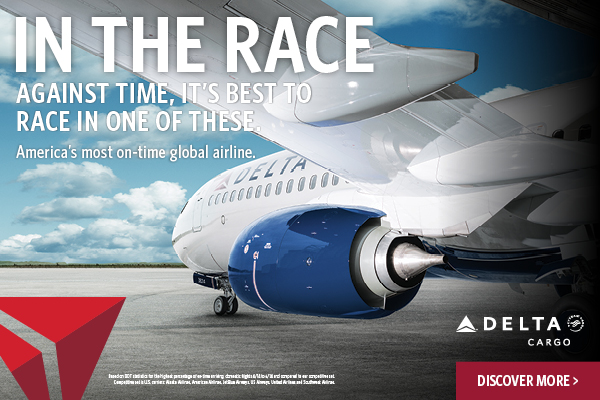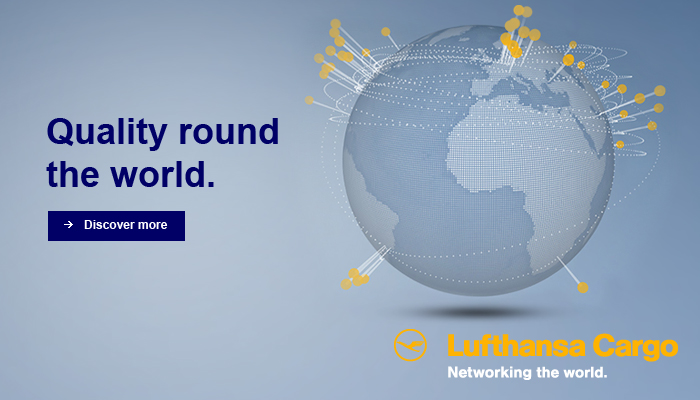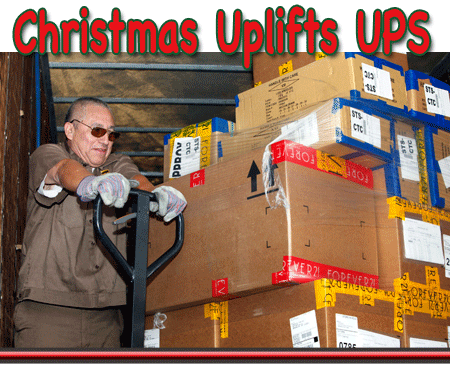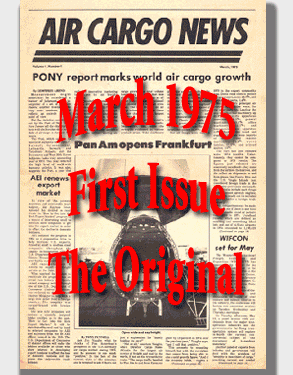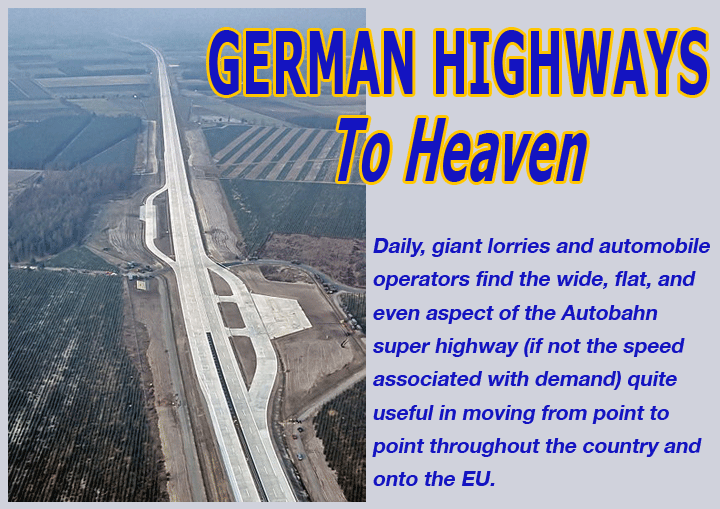
Visiting Germany for business or pleasure
certainly offers rich and varied memories, including the places where
history was made.
Daily, giant lorries and automobile operators
find the wide, flat, and even aspect of the Autobahn super highway (if
not the speed associated with demand) quite useful in moving from point
to point throughout the country and onto the EU.
Aside from the pioneering aspect of the
super-highways, there are a notable number of locations besides the Autobahn
where history, fortunately has not been made and which are not all that
obvious to the untrained eye:
During the Cold War occupation, the “NLP-Str.”
as they were abbreviated in German bureaucratese (Notlandeplatz-Strasse
or Emergency Landing Strip-Road) were something commonly encountered on
German highways both in Western Germany and Eastern Germany.
These Emergency Landing Strips—ELSs—were
something other than one might assume from the designator ELS, and not
intended to be used for the purpose of aircraft emergencies but for military
purposes.
There Is A Jet At My Rest Stop
At the peak of the cold war between East and West,
the most common threat scenario assumed Warsaw Pact troops rolling into
the NATO territory bordering the Warsaw Pact states.
In particular, Germany—both its Eastern
and Western parts—was considered an expendable “buffer zone”
where the first clash of the amassed forces was to take place.
Under the allied forces agreement, a multitude
of US, Canadian, French, and British troops were stationed in Western
Germany, and Soviet forces in Eastern Germany, after WWII Germany.
This situation lasted until Germany achieved
full sovereignty in 1990 following reunification as a result of the Two-plus-four
agreement, which settled the status of the reunified German state within
Europe.
Many German regional airports started their
existence as military airfields of allied forces, including Hahn, which
was a former U.S. military airbase; Baden-Baden, a Canadian air base;
and Magdeburg-Cochstedt, a former Soviet base.
Emergency
Landing Strips 1938
World War II proved that military airfields
as well as other locations of prime military significance were primary
targets for enemy air raids and options were limited to protect these
targets by traditional military means.
The Germans began in 1938 to convert parts
of their prized new super highways, which were being built to connect
the nation, to also allow military aircraft operations.
This measure was adopted by postwar Germany
and the NATO allies (as it was adopted in Eastern Germany) in order to
provide sufficient hidden capacity for fighter aircraft.
German law provided a legal framework for
both the conversion of existing highway parts to such ELSs and for the
construction of new ones.
While to the unsuspecting observer these
facilities were—and still are—not obvious, they are fairly
easy to spot if you know what to look for:
Specifications called for even strips of
road not less than three lanes (all German highways are at least a four-lane
blacktop) of no less than 2,500 meters (1.55 mi) with suitable aircraft
parking and ground support facilities, as well as keeping the surrounding
areas free of obstructions such as tall buildings, antennas, and trees.
For this reason, ELSs were predominantly
constructed near to or in conjunction with existing rest stations and
parking facilities.
The latter were equipped with power and
water connections, connecting taxiways and sometimes, sheltered aircraft
parking facilities.
The area between the lanes was paved and
the median crash barrier had glare protection installed as a plug-in solution,
which could be removed in a matter of minutes.
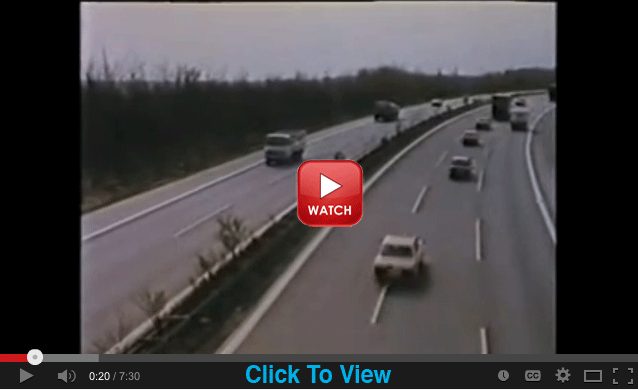 |
Furthermore, detours that allowed bypassing
the ELSs part of the Autobahn were planned so that the use of such ELSs
would not cause a total breakdown of vehicular traffic.
Since the construction of such ELSs was
subject to strict specifications, the construction of new highways (or
their reconstruction) was often carried out differently from initial specifications
to allow for locations that were free of bridges, crossings, and obstructing
buildings and landscape.
Last Hurrah
The last time these facilities were subjected
to a large-scale test was in 1984, when the NATO-exercise “Highway’84”
took place: Click Here
to view
Although “Highway’84”
proved the viability of the concept, in the years to follow it became
clear that any military clash in Europe would likely not involve large
fleets of aircraft and tanks; in other words, the threat scenario had
changed, owing to a more unified and pan-European approach and the absorption
of former Warsaw Pact states Poland, Czech Republic, Slovakia, Bulgaria,
and Romania within the European Community and their integration into the
NATO defense alliance.
But still today there are traces of the
past, the least of which are certainly not those long, straight ribbons
of highway moving people and commerce from here to tomorrow all over Germany.
Jens
|
